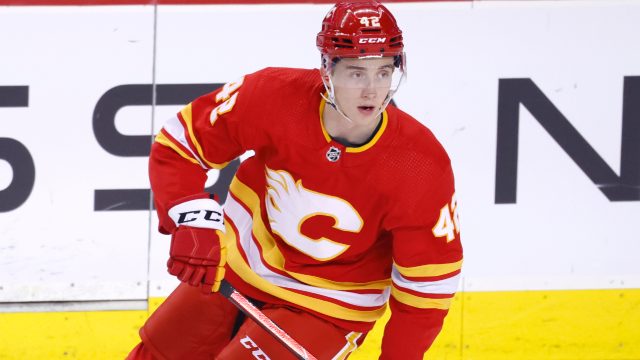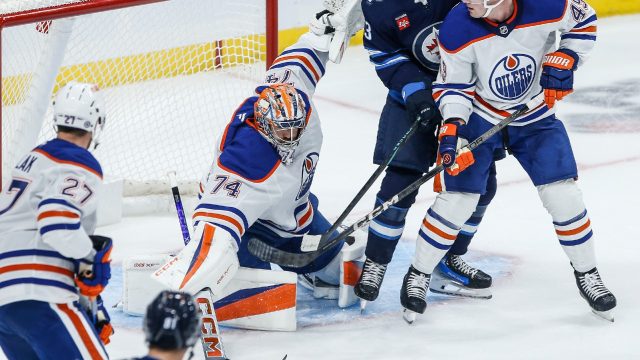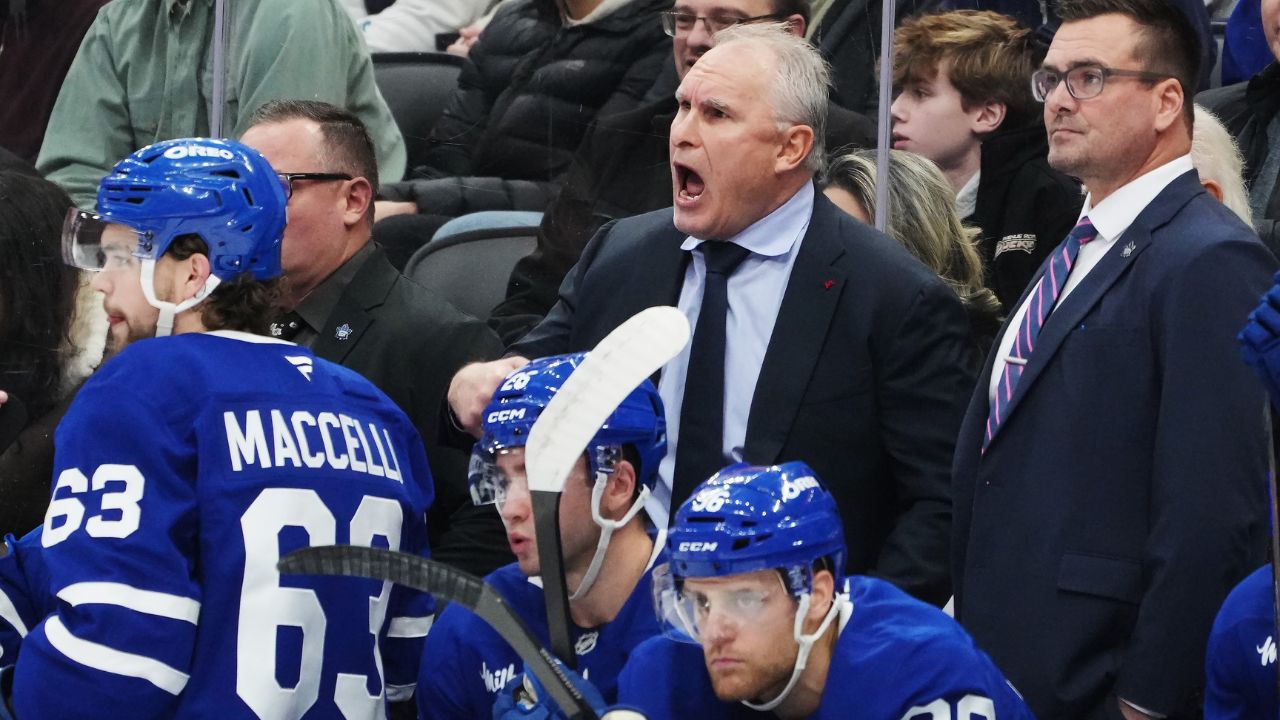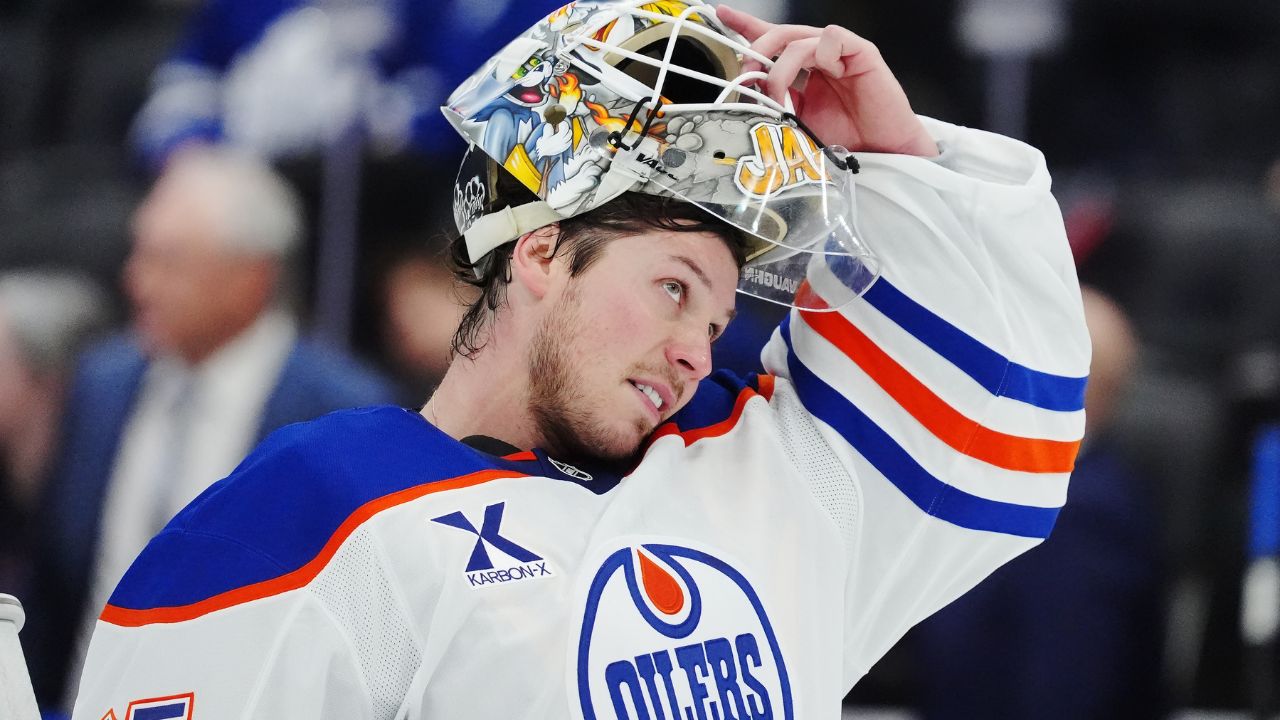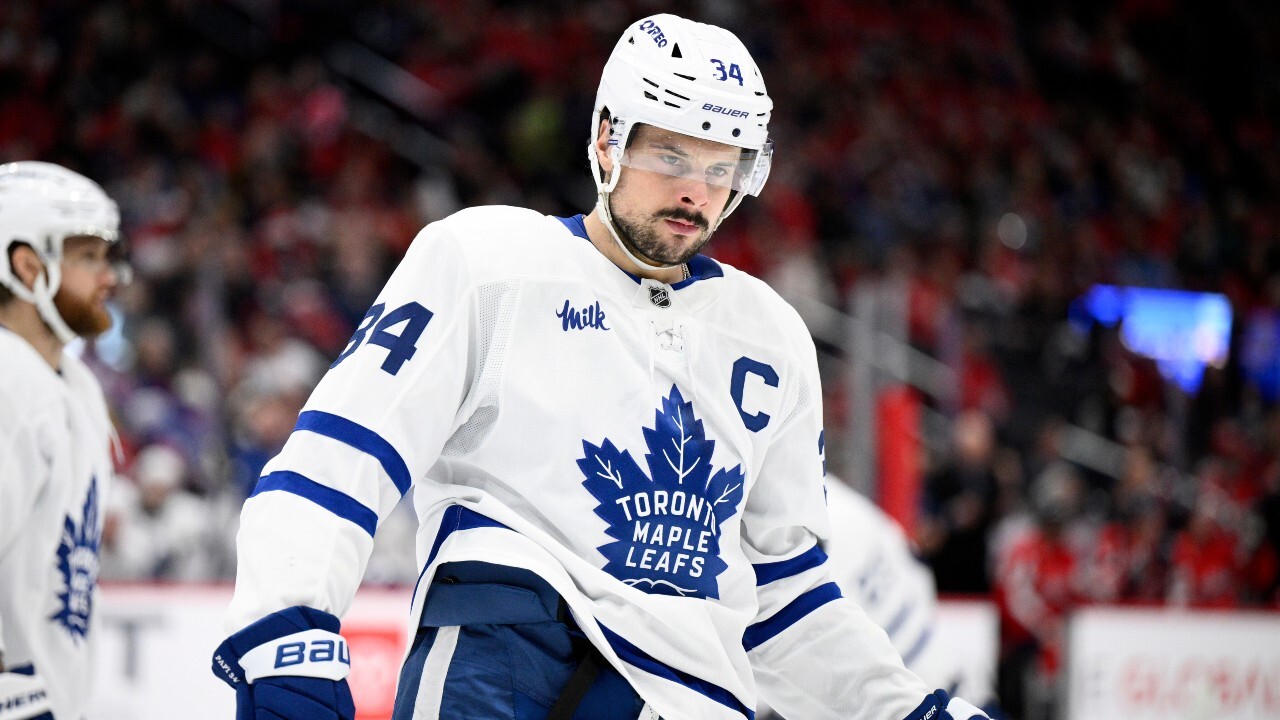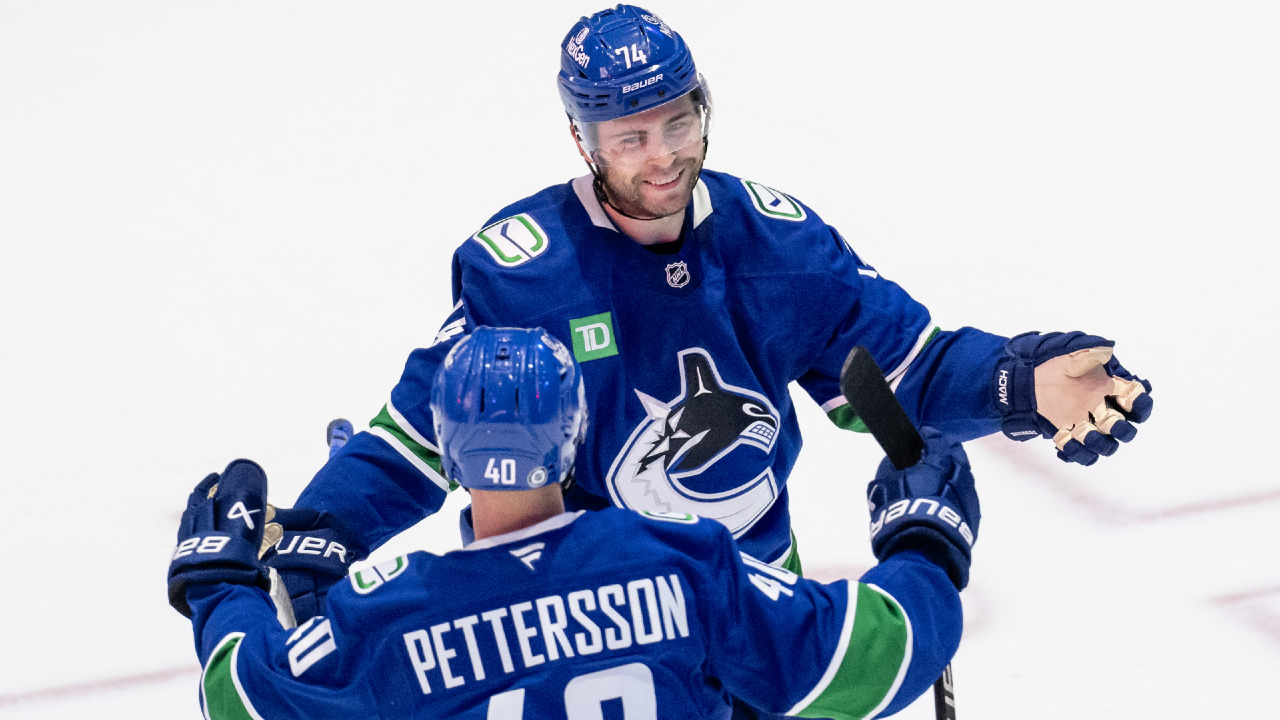
ABBOTSFORD, B.C. — Two brilliant moments were enough to make up for several suspect ones Wednesday for the Vancouver Canucks as Jake DeBrusk’s tap-in overtime goal gave his new National Hockey League team a 4-3 pre-season win over the Calgary Flames.
As you would expect from Game 2 of the pre-season — and with most skaters in the Canucks’ lineup playing their first tuneup — there were plenty of mistakes against a weaker Flames’ lineup at the Abbotsford Centre.
But Canuck Daniel Sprong scored on a brilliant solo rush to tie the game with 14.3 seconds remaining in regulation time, and NHL stars Elias Pettersson and Quinn Hughes combined beautifully to set up DeBrusk on a three-on-two rush at 58 seconds of overtime.
DeBrusk’s deflection of Vincent Desharnais’ point shot had broken a 1-1 tie late in the second period and the newest Canuck, who signed a seven-year, $38.5-million free-agent contract to join Vancouver, was also jamming the net when prospect Max Sasson banked in a centring pass in the first.
Sasson had a couple of good moments in his second game in two nights, as did minor-league prospects Aatu Raty and Arshdeep Bains. But despite the pre-season focus on players trying to make the Canucks, none of the candidates are as remotely as important as players like Pettersson and DeBrusk, who began Wednesday to establish chemistry as linemates — a partnership management and coaches have envisioned since DeBrusk was the first free agent signed on July 1.
Until the winning goal, Pettersson had had a quiet night, as had the third member of his line, 20-year-old prospect Jonathan Lekkerimaki.
Indicative of lineup strength, the matchup in overtime featured Pettersson, Hughes and DeBrusk (cumulative cap hit this season of $24.95 million) against Flames Conor Zary, Martin Pospisil and Tyson Barrie ($1.86 million total).
It was the first game of the pre-season for all three Canucks.
Sprong and fellow newcomers Desharnais and Kiefer Sherwood also played their first games since signing in Vancouver as free agents.
Sprong was one of the more dangerous Canucks throughout the game. He missed the net on a pair of great scoring chances in the first period, blasted a shot off the post in the second, and tied the game as the Canucks skated six-against-four late in the third. On his spectacular rush, Sprong burst across the blue line, embarrassed Calgary defenceman Jarred Tinordi, then zipped around goalie Devin Cooley to score on a forehand deke.
Goalie Jiri Patera played the entire game for the Canucks and was probably their best player until Samuel Honzek scored on a net-front redirect at 10:08 of the third period and Dryden Hunt shot between the goalie’s pads on his third breakaway of the game at 15:04 to put the Flames ahead. Calgary got players behind Vancouver defenders numerous times.
BLAIS’ TRAIL
The last guy in Canucks camp on a professional tryout, Sammy Blais was more noticeable against the Flames than he was during Vancouver’s 3-1 pre-season-opening win Tuesday against the Seattle Kraken. On one memorable forechecking shift, Blais knocked Barrie to the ice three times.
But if you’re handicapping players challenging to be the 12th or 13th forward when the regular season starts, younger players like Raty, Bains and Sasson have all been better than Blais — as has veteran incumbent Phil Di Giuseppe.
The Canucks practise Thursday before visiting Seattle on Friday and Calgary Saturday.
THE BEST NEWS
Canucks coach Rick Tocchet gave another encouraging but undetailed update on injured goalie Thatcher Demko, who remains out indefinitely with a knee muscle injury.
“I heard he had a good day again today,” he told reporters in Abbotsford. “We measure his good days. The thing with Demmer is we talk about no target dates, just days. And so far, it’s been, you know, consecutive days. . . at least 10 or 12 where he’s had good days, so that’s a positive.”
QUOTEBOOK
After Wednesday’s morning skate, Norris Trophy winner Quinn Hughes on being ready for the pre-season: “When I talk about being sharp, I think that’s really mainly just getting used to the physicality of the game. And that’s what I’m really focused on today, just making sure that my mind’s ready to go and I’m putting my body in good spots.”
TED TALKS
For many fans, the most popular part of the NHL pre-season is watching and debating all the talented, young prospects suddenly — and usually temporarily — on the radar, and then projecting how they might fit their team’s opening-night lineup.
But the reality for many teams like the Canucks is that however few NHL jobs may actually be available, filling them is heavily influenced by injuries, the hard salary cap, roster limits and waiver eligibility.
After inheriting a salary-cap straight jacket 2 ½ years ago, Vancouver general manager Patrik Allvin has finally built a little wriggle room and is determined to maintain it by not starting another regular season in Long Term Injured Reserve.
The organization is desperate to set its opening-night roster under the NHL ceiling of $88 million, which means all injured players are on the 23-player roster or “regular” injured reserve and counting against the cap. After the season starts, a player like indefinitely (possibly permanently) injured defenceman Tucker Poolman can be transferred to LTIR, creating spending room equivalent to his $2.5-million salary.
Amid this landscape, one of the most important developments this week for the Canucks was the successful return to practice of veteran depth centre Teddy Blueger, who missed the start of training camp due to undisclosed off-season surgery.
With Poolman (neurological complications), winger Dakota Joshua (cancer) and Demko (knee) out indefinitely — the tab of these injured players is $10.75-million — it is important that Blueger is actually able to play on opening night when his $1.8-million salary is counting against the cap.
The 30-year-old, bottom-six centre was not part of Wednesday’s lineup and instead practised a second straight day with the non-playing half of the team. But with a couple or three full practices this week with teammates, Blueger could be in the lineup this weekend.
“We discussed the timeline and were very confident that I’d have. . . time to be back,” Blueger told reporters on Tuesday. “Obviously, the rehab process isn’t always really smooth — two steps forward, one step back sometimes. So there’s no guarantees. But I played with a guy last year who had the same exact procedure done at the same time as I did, and he was back in plenty of time to start the year. So, yeah, I was pretty confident.”
The Canucks do not allow players to disclose details of their injuries, but Blueger’s surgery was sometime in the summer — after he ramped up off-season training in June and discovered his body had not fully healed since Vancouver’s season ended in May.
Blueger said he skated for 2-3 weeks before fully rejoining teammates on Tuesday.
After matching a career-high last season with 28 points in 68 games while averaging 14:56 of ice time, and also driving the Canucks’ new culture under Tocchet, Blueger’s availability would give the team options.
But the organization’s plan since free agency is that Blueger will centre the fourth line behind Pius Suter, who would return to the middle from left wing and take Blueger’s wingers from last season, Joshua and Conor Garland.
“All of that is speculation,” Blueger said. “I feel like at this point in my career, I’ve kind of been through a lot. There’s speculation at training camp, what the lines are going to be, and then a month into the season, it’s completely different. I think it’s all performance-based at the end of the day. I know what I’ve got to do to earn certain spots or where I want to be in the lineup. That’s kind of up to me and how I play.”
As long as he can play, there are no bad spots for Blueger on the Canucks.


